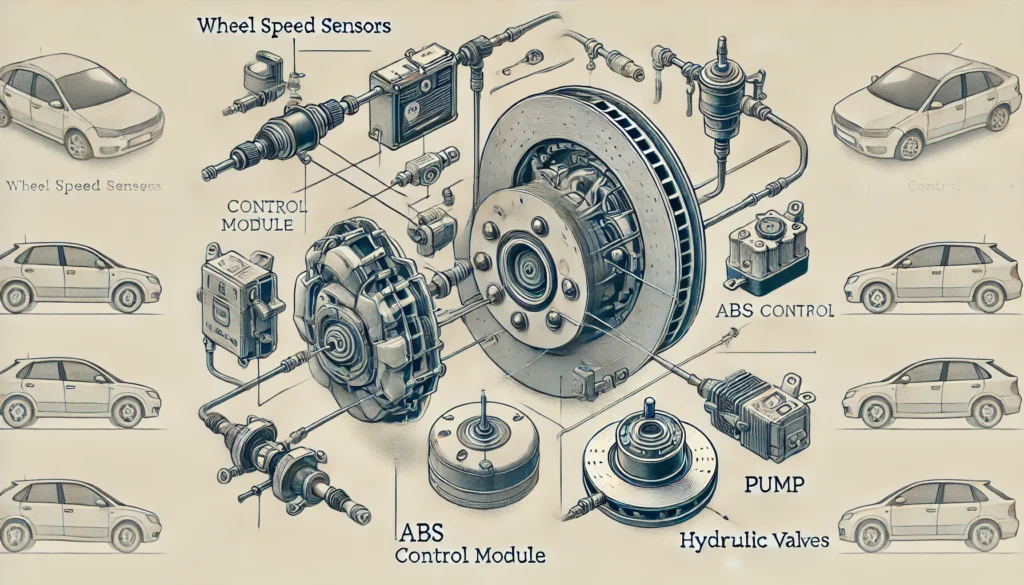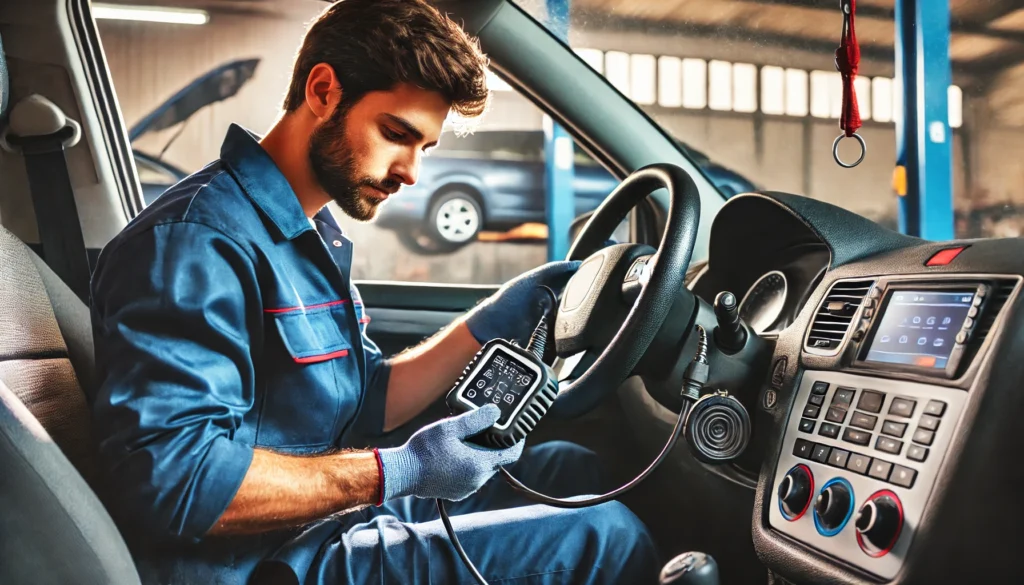The Anti-lock Braking System (ABS) is a crucial safety feature in modern vehicles, designed to prevent the wheels from locking up during braking, thus maintaining steering control and reducing stopping distances. When the ABS light illuminates on your dashboard, it indicates a fault within the system that needs to be addressed. Knowing which parts might need to be replaced or repaired can help ensure your vehicle remains safe and reliable.
Understanding ABS System Components
The ABS system comprises several key components that work together to prevent wheel lockup:
- Wheel Speed Sensors: Monitor the speed of each wheel and send data to the ABS control module.
- ABS Control Module: Processes data from the wheel speed sensors and controls the hydraulic valves.
- Hydraulic Valves: Regulate brake pressure to prevent wheel lockup.
- Pump: Restores pressure to the hydraulic brakes after the valves release it.

Common ABS Faults and Associated Repairs
- Faulty Wheel Speed Sensors:
- Cause: Sensors can become dirty, damaged, or fail over time.
- Symptoms: Inaccurate wheel speed readings can cause the ABS light to illuminate.
- Repair: Clean the sensors if dirty; replace them if damaged. This typically costs between $100 and $200 per sensor, including parts and labor.
- Damaged Wiring:
- Cause: Wiring connecting the sensors to the ABS control module can become damaged or corroded.
- Symptoms: Disrupted communication between sensors and the control module.
- Repair: Repair or replace damaged wiring. Costs can range from $100 to $1,000 depending on the extent of the damage.
- Faulty ABS Control Module:
- Cause: The control module can fail due to electrical issues or wear and tear.
- Symptoms: The ABS system may not function correctly, and the ABS light will stay on.
- Repair: Replace or reprogram the ABS control module. This repair typically costs between $300 and $1,000.
- Hydraulic Valve Issues:
- Cause: Hydraulic valves can become stuck or fail to operate properly.
- Symptoms: Inconsistent brake pressure and ABS light illumination.
- Repair: Clean or replace faulty valves. Repair costs can vary widely, from $150 to $400.
- Pump Failure:
- Cause: The pump, which restores brake pressure, can wear out over time.
- Symptoms: Inadequate brake pressure restoration, leading to longer stopping distances.
- Repair: Replace the ABS pump, which can cost between $200 and $500.

Steps to Diagnose and Repair ABS Faults
- Use an OBD-II Scanner:
- Connect an OBD-II scanner to the vehicle’s diagnostic port to read error codes related to the ABS system. These codes help identify the specific component causing the fault.
- Inspect and Test Components:
- Visually inspect the wheel speed sensors, wiring, and hydraulic components. Use diagnostic tools to test the functionality of the ABS control module and pump.
- Clean or Replace Faulty Parts:
- Clean dirty sensors, replace damaged sensors and wiring, and repair or replace malfunctioning hydraulic valves and the ABS control module as needed.
- Reset the ABS Light:
- After repairing or replacing the faulty components, reset the ABS light using the OBD-II scanner to ensure the system is functioning correctly.
Importance of Professional Assistance
While some ABS repairs, such as cleaning sensors, can be done at home, others require professional expertise. Complex issues involving the ABS control module, hydraulic valves, and pump are best handled by certified mechanics who have the tools and knowledge to perform the repairs safely and effectively.
Conclusion
Addressing ABS faults promptly is essential for maintaining vehicle safety. Common repairs include cleaning or replacing wheel speed sensors, repairing damaged wiring, and replacing faulty ABS control modules, hydraulic valves, or pumps. By understanding which parts need attention and seeking professional assistance when necessary, you can ensure your ABS system functions correctly, keeping you and your passengers safe on the road.